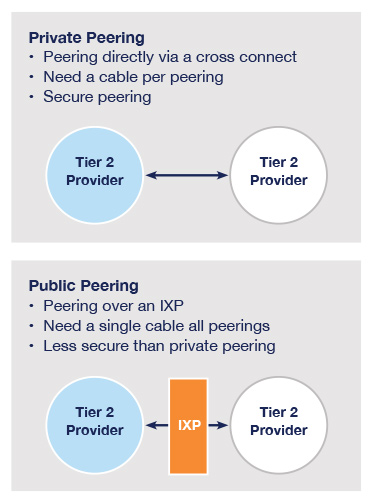 Internet Exchange Services
Internet Exchange Services
Traditional Transport…Transformed
Your data deserves a lightning-fast, powerful network-to-network connection. When you peer with Telehouse, you’ll interconnect seamlessly with hundreds of partners, exchange your IP traffic at up to 100GigE speeds, and experience dramatic cost savings by averaging down bandwidth fees.
Telehouse internet exchange providers anticipated the massive demand for efficient peering, and in 1996, established NYIIX which has one of the largest and most active memberships of any International Peering Exchange and internet exchange points in the US. We can provide access in our data centers to some of the largest PXs globally, giving our customers access to hundreds of partners around the world.
All of our PX are open, so you don’t have to colocate with us to join.
View our International Peering Exchange Network
Our Peering Technology
The upgrade to the Centillion Platform II gives you Dual Core MPLS/VPLS infrastructure and utilizes the Brocade MLXe platform, the ultimate in network capacity, management and simplicity. Both IXPs support IPv4 and IPv6 protocols.
Both of our US IPX are based on Brocade’s carrier class ultra high-speed platform and offer on-site Thunderbird route servers for seamless setup and immediate connectivity.
NYIIX: New York/Los Angeles/Philadelphia
International Internet Exchange
NYIIX maintains seamless switching fabrics at:
- 85 10th Ave.
- 111 8th Ave.
- 7 Teleport Drive
- 60 Hudson St.
- 32 Avenue of the Americas
- 165 Halsey Street, Newark
- 275 Hartz Way, Secaucus
- 401 North Broad St., Philadelphia
Los Angeles
- 626 Wilshire Blvd.
- 1 Wilshire

What is Peering?
It is simply the settlement-free reciprocal exchange of Internet traffic between ISPs (Internet Service Providers) for mutual benefit.
Neither party pays the other for the exchange of traffic. Usually each derives revenue from its own customers, but larger ISPs may charge smaller ones for peering with them.
In this way, the Internet has become the behemoth that it is. IXPs are a prime example of The Network Effect, in that the more people use it, the more value it has to everyone.
Learn more about how the International Exchange operates
Why Companies Peer
- To save money by reducing connectivity costs
- It’s more efficient and increases performance
- Lower latency with faster, more direct data flow
- Greater control over their traffic
The difference between private and public Peering
Private peering requires direct cabling between the two parties. Cabling greatly increases cost and time, but private peering is more secure than public peering because it is a closed network.
Public Peering connects partners through an IXP (Internet Exchange Point). It costs less because only a single cable is required to connect to all peering partners. An ISP can Peer with multiple ISPs with a single router interface.
How to reduce bandwidth and transit costs through PX
An IXP reduces your average per-bit delivery cost by reducing a portion of your upstream traffic. Peering routes traffic more directly, which reduces your traffic-time-to-destination ratio. Peering improves routing efficiency, which also cuts costs. These Internet Peering cost savings can add up. 75% is not unusual.
Peering increases fault tolerance to keep your data protected and operational in the event of a failure. Our IXP sales team can calculate your savings.
Telehouse IXP Network Peering customers experience:
- Powerful network-to-network connections with speeds up to 10 GigE
- Enhanced network performance thanks to lowered latency
- Improved connectivity
- Direct access to mainstream traffic as well as niche, regional traffic
- Dramatic savings through minimized bandwidth utilization fees/minimized transit costs
- Optimal primary and secondary IP traffic routing options
- IPV4 and IPV6 capable
- The opportunity to connect to one of the few IX route servers in the United States



